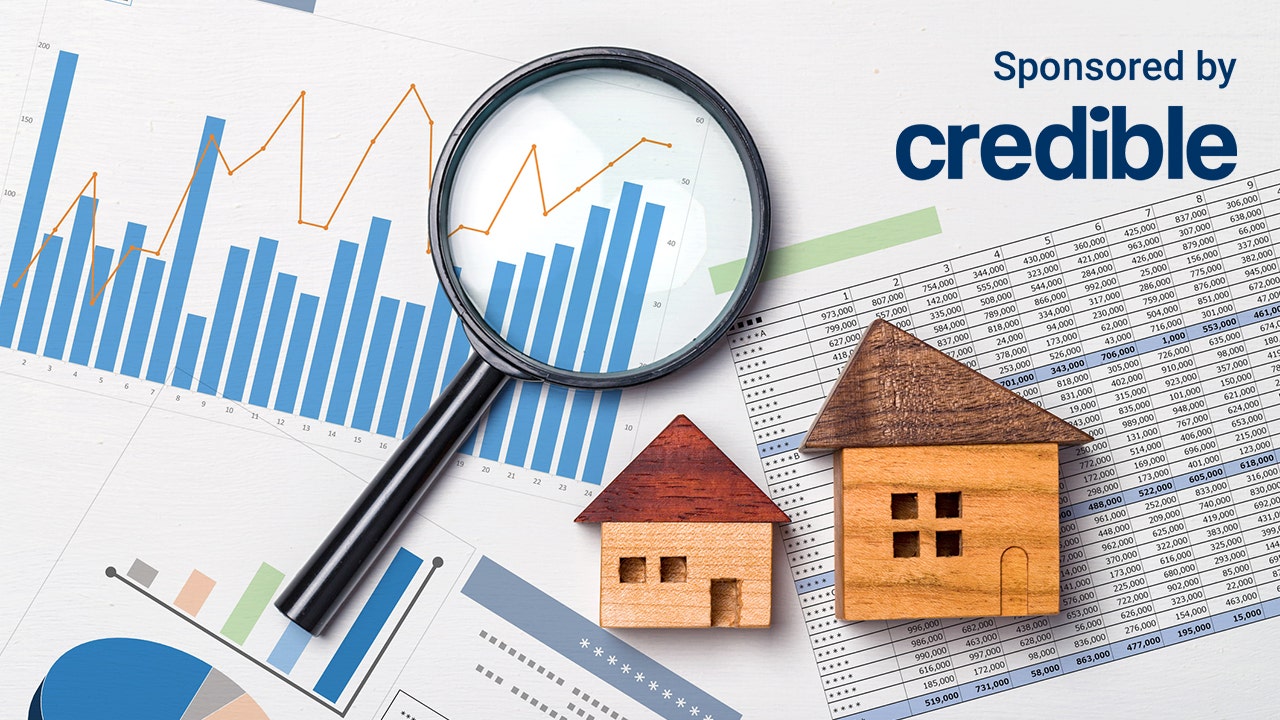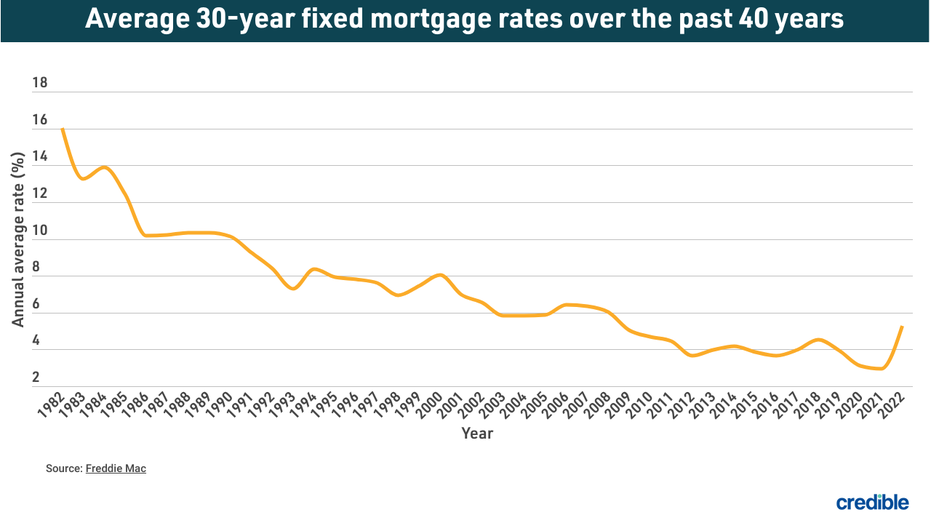Personal Finance
Still time to save: Today’s 30-year mortgage rates hold steady | Feb. 17, 2023

Our goal here at Credible Operations, Inc., NMLS Number 1681276, referred to as “Credible” below, is to give you the tools and confidence you need to improve your finances. Although we do promote products from our partner lenders who compensate us for our services, all opinions are our own.
Based on data compiled by Credible, mortgage rates for home purchases have risen for one key term and held steady for three terms since yesterday.
Rates last updated on Feb. 17, 2023. These rates are based on the assumptions shown here. Actual rates may vary. Credible, a personal finance marketplace, has 5,000+ Trustpilot reviews with an average star rating of 4.7 (out of a possible 5.0).
What this means: Mortgage rates rested across three key terms today, except for 15-year rates, which edged slightly up. At 6.375%, borrowers may want to consider a 20-year term. A 20-year mortgage offers a desirable blend of a relatively low rate and smaller monthly mortgage payments.
To find great mortgage rates, start by using Credible’s secured website, which can show you current mortgage rates from multiple lenders without affecting your credit score. You can also use Credible’s mortgage calculator to estimate your monthly mortgage payments.
Based on data compiled by Credible, mortgage refinance rates have risen for three key terms and remained unchanged for one term since yesterday.
Rates last updated on Feb. 17, 2023. These rates are based on the assumptions shown here. Actual rates may vary. With 5,000 reviews, Credible maintains an “excellent” Trustpilot score.
What this means: Mortgage refinance rates rose for three terms today, with rates for 30-year terms climbing half a percentage point and rates for 10-year terms rising by a quarter of a percentage point. Meanwhile, 20-year rates held steady. Homeowners may want to consider refinancing to a 10- or 15-year term while rates are still under 6%. Shorter terms do come with higher monthly payments, but they offer homeowners the opportunity to be mortgage-free sooner.
How mortgage rates have changed over time
Today’s mortgage interest rates are well below the highest annual average rate recorded by Freddie Mac – 16.63% in 1981. A year before the COVID-19 pandemic upended economies across the world, the average interest rate for a 30-year fixed-rate mortgage for 2019 was 3.94%. The average rate for 2021 was 2.96%, the lowest annual average in 30 years.
The historic drop in interest rates means homeowners who have mortgages from 2019 and older could potentially realize significant interest savings by refinancing with one of today’s lower interest rates. When considering a mortgage refinance or purchase, it’s important to take into account closing costs such as appraisal, application, origination and attorney’s fees. These factors, in addition to the interest rate and loan amount, all contribute to the cost of a mortgage.

How Credible mortgage rates are calculated
Changing economic conditions, central bank policy decisions, investor sentiment, and other factors influence the movement of mortgage rates. Credible average mortgage rates and mortgage refinance rates reported in this article are calculated based on information provided by partner lenders who pay compensation to Credible.
The rates assume a borrower has a 740 credit score and is borrowing a conventional loan for a single-family home that will be their primary residence. The rates also assume no (or very low) discount points and a down payment of 20%.
Credible mortgage rates reported here will only give you an idea of current average rates. The rate you actually receive can vary based on a number of factors.
Factors that influence mortgage rates (and are out of your control)
Many factors influence the interest rate a lender may offer you. Some – such as your credit score – are in your control. But others you have no ability to affect, such as:
- The economy â During financial downturns, the Fed may lower interest rates to try to stimulate the economy. And when the economy is doing well, interest rates can rise.
- Inflation â Interest rates tend to move with inflation. When the overall cost of goods and services increases, interest rates are also likely to rise.
- The Federal Reserve â The Fed may choose to lower interest rates to stimulate a struggling economy, or raise rates in an attempt to put the brakes on inflation.
- Macro employment trends â When many people are out of work, as they were during the months of pandemic lockdown, mortgage rates may fall. As employment increases, interest rates typically also increase.
If you’re trying to find the right mortgage rate, consider using Credible. You can use Credible’s free online tool to easily compare multiple lenders and see prequalified rates in just a few minutes.
Have a finance-related question, but don’t know who to ask? Email The Credible Money Expert at moneyexpert@credible.com and your question might be answered by Credible in our Money Expert column.
Read the full article here

-

 Side Hustles7 days ago
Side Hustles7 days agoWhy I Apply Mike Tyson’s Mindset to My Business Strategy
-

 Side Hustles6 days ago
Side Hustles6 days ago5 Myths About Young Shoppers and How Retailers Can Reach Them
-

 Passive Income4 days ago
Passive Income4 days agoThe One Microsoft Design Tool Business Owners Shouldn’t Miss
-

 Investing6 days ago
Investing6 days agoU.K. stocks lower at close of trade; Investing.com United Kingdom 100 down 0.07% By Investing.com
-

 Side Hustles6 days ago
Side Hustles6 days agoTake Control of Your Projects for Life for Just $79.97
-

 Passive Income7 days ago
Passive Income7 days ago6 Reasons Why Entrepreneurs Need to Be on LinkedIn
-

 Side Hustles7 days ago
Side Hustles7 days ago4 Steps Companies Must Take to Get Their Data Ready for AI
-

 Investing6 days ago
Investing6 days agoWant Your Workers to Be More Productive? You Need a Better Way to Measure Their Contributions


















